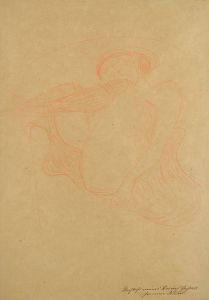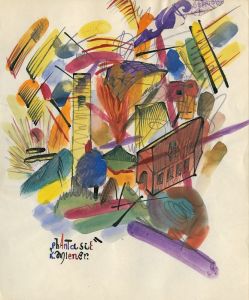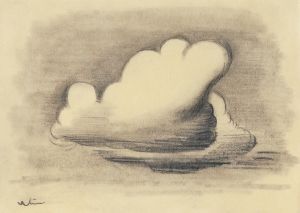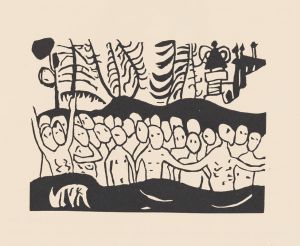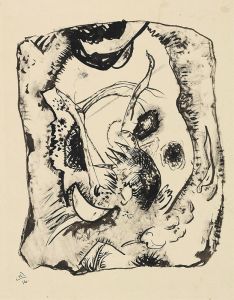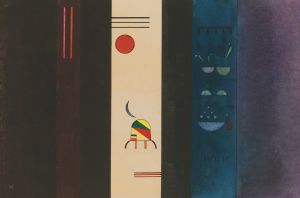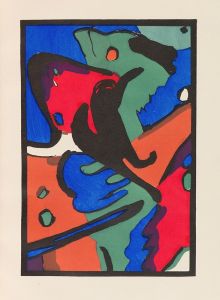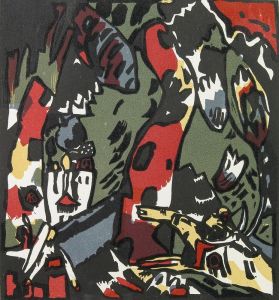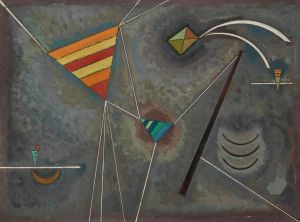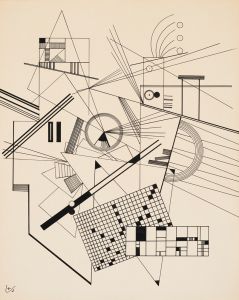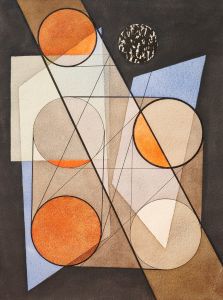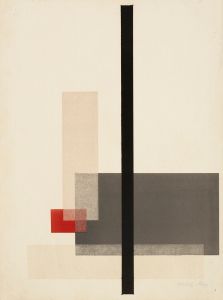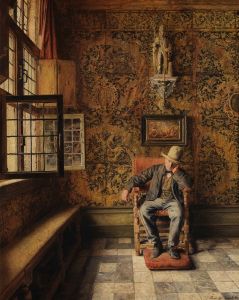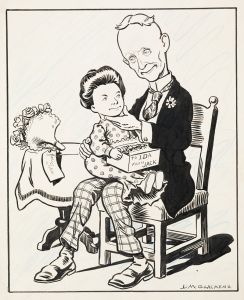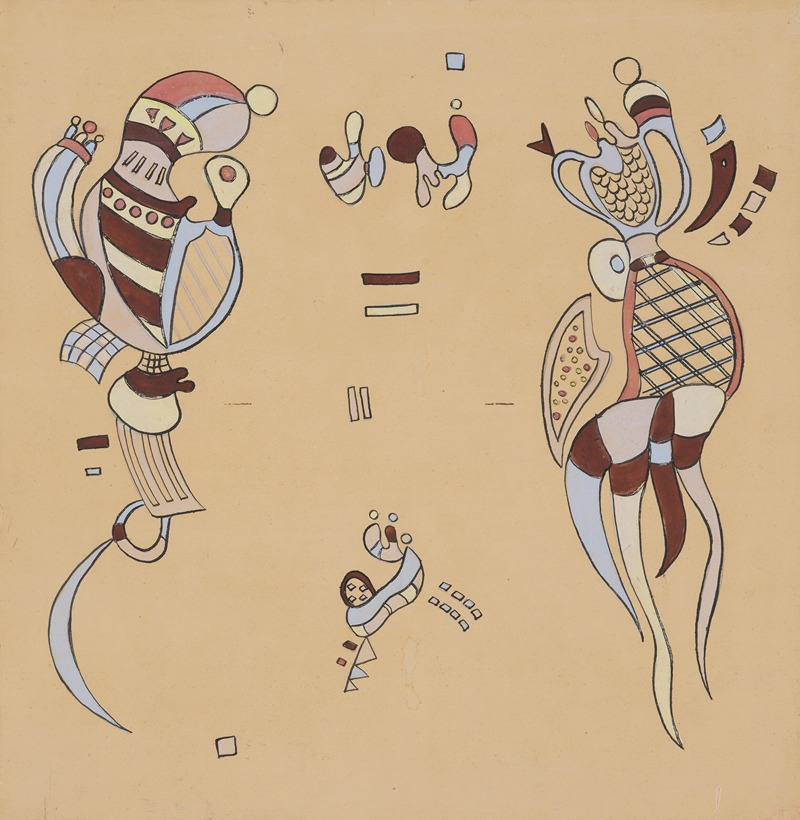
Esquisse pour tissu ou Projet pour un fauteuil
A hand-painted replica of Wassily Kandinsky’s masterpiece Esquisse pour tissu ou Projet pour un fauteuil, meticulously crafted by professional artists to capture the true essence of the original. Each piece is created with museum-quality canvas and rare mineral pigments, carefully painted by experienced artists with delicate brushstrokes and rich, layered colors to perfectly recreate the texture of the original artwork. Unlike machine-printed reproductions, this hand-painted version brings the painting to life, infused with the artist’s emotions and skill in every stroke. Whether for personal collection or home decoration, it instantly elevates the artistic atmosphere of any space.
Wassily Kandinsky, a pioneering figure in abstract art, created numerous works that explored the relationship between color, form, and emotion. One of his lesser-known works is "Esquisse pour tissu ou Projet pour un fauteuil," which translates to "Sketch for Fabric or Project for an Armchair." This piece reflects Kandinsky's interest in applying his artistic theories beyond traditional canvas painting, extending into the realm of design and decorative arts.
Kandinsky was born in Moscow in 1866 and later became a prominent member of the Bauhaus, a revolutionary art school in Germany that combined crafts and the fine arts. The Bauhaus was known for its approach to design that sought to unify art, craft, and technology. Kandinsky joined the Bauhaus in 1922 and taught there until its closure in 1933. During his time at the Bauhaus, Kandinsky was deeply involved in exploring how art could be integrated into everyday life, which included designing textiles and furniture.
"Esquisse pour tissu ou Projet pour un fauteuil" is believed to be part of Kandinsky's exploration into textile design. Although specific details about this particular work are scarce, it is consistent with the Bauhaus ethos of creating functional art that could be mass-produced and accessible to the public. Kandinsky's work in this area often featured geometric shapes and vibrant colors, elements that were central to his abstract paintings.
Kandinsky's approach to art was heavily influenced by his synesthetic experiences, where he could perceive colors as sounds and vice versa. This unique perception informed his use of color and form, aiming to evoke emotional responses from the viewer. His work in textile and furniture design was no different, as he sought to bring the same emotional depth and aesthetic principles to these mediums.
The Bauhaus period was a time of significant experimentation for Kandinsky. He collaborated with other artists and designers, such as Paul Klee and Marcel Breuer, who were also exploring the boundaries between art and design. This collaborative environment fostered innovation and allowed Kandinsky to apply his theories in new and practical ways.
While "Esquisse pour tissu ou Projet pour un fauteuil" may not be as widely recognized as some of Kandinsky's other works, it represents an important aspect of his artistic journey. It showcases his commitment to integrating art into everyday objects and environments, a principle that remains influential in contemporary design.
Kandinsky's legacy is marked by his contributions to abstract art and his role in the Bauhaus movement. His work continues to inspire artists and designers who seek to blur the lines between different artistic disciplines. "Esquisse pour tissu ou Projet pour un fauteuil" is a testament to Kandinsky's vision of art as a universal language that transcends traditional boundaries, enriching both the aesthetic and functional aspects of the objects it adorns.
In summary, Wassily Kandinsky's "Esquisse pour tissu ou Projet pour un fauteuil" is a reflection of his innovative approach to art and design during his time at the Bauhaus. Although specific details about this work are limited, it embodies the principles of integrating art into everyday life, a hallmark of Kandinsky's enduring influence on the world of art and design.





